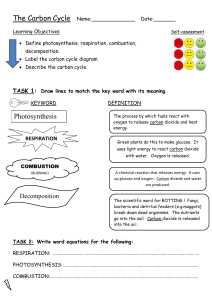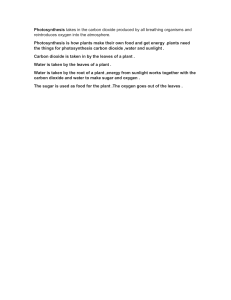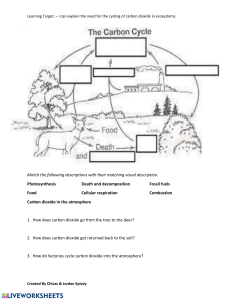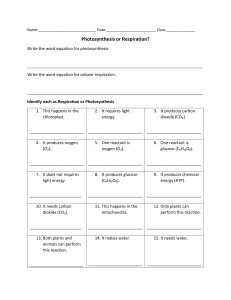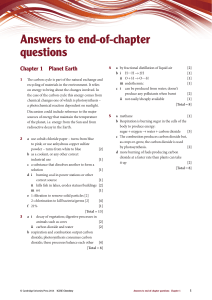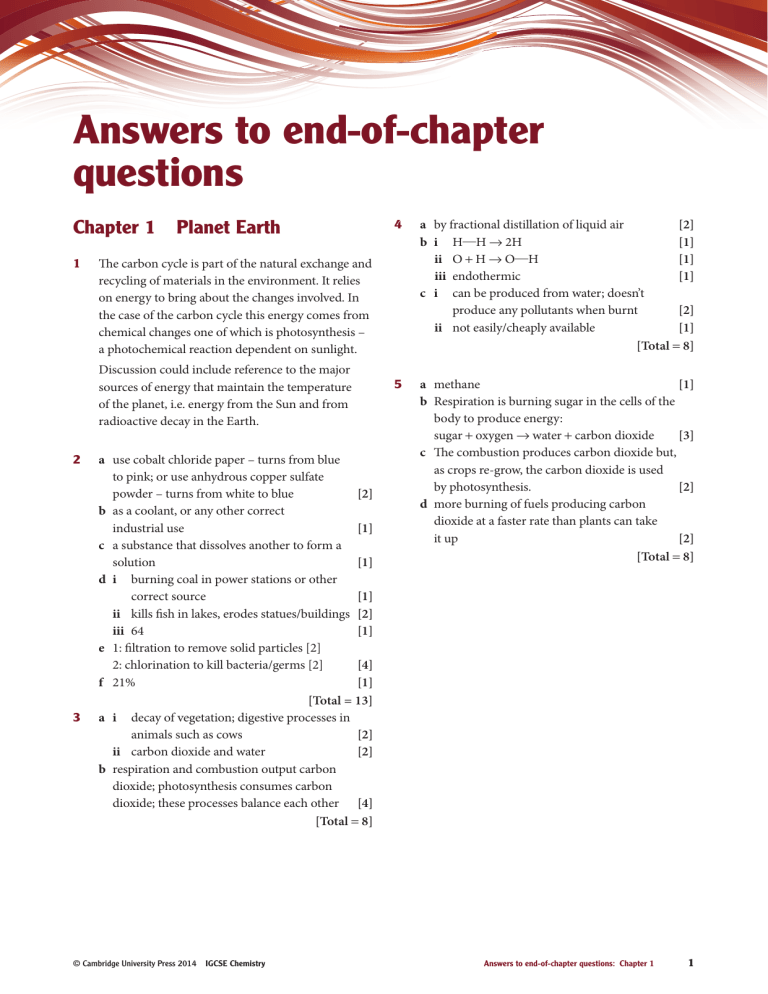
Answers to end-of-chapter questions Chapter 1 Planet Earth 1 3 a by fractional distillation of liquid air [2] b i H—H → 2H [1] ii O + H → O—H [1] iii endothermic [1] c i can be produced from water; doesn’t produce any pollutants when burnt [2] ii not easily/cheaply available [1] [Total = 8] 5 a methane [1] b Respiration is burning sugar in the cells of the body to produce energy: sugar + oxygen → water + carbon dioxide [3] c The combustion produces carbon dioxide but, as crops re-grow, the carbon dioxide is used by photosynthesis. [2] d more burning of fuels producing carbon dioxide at a faster rate than plants can take it up [2] [Total = 8] The carbon cycle is part of the natural exchange and recycling of materials in the environment. It relies on energy to bring about the changes involved. In the case of the carbon cycle this energy comes from chemical changes one of which is photosynthesis – a photochemical reaction dependent on sunlight. Discussion could include reference to the major sources of energy that maintain the temperature of the planet, i.e. energy from the Sun and from radioactive decay in the Earth. 2 4 a use cobalt chloride paper – turns from blue to pink; or use anhydrous copper sulfate powder – turns from white to blue [2] b as a coolant, or any other correct industrial use [1] c a substance that dissolves another to form a solution [1] d i burning coal in power stations or other correct source [1] ii kills fish in lakes, erodes statues/buildings [2] iii 64 [1] e 1: filtration to remove solid particles [2] 2: chlorination to kill bacteria/germs [2] [4] f 21% [1] [Total = 13] a i decay of vegetation; digestive processes in animals such as cows [2] ii carbon dioxide and water [2] b respiration and combustion output carbon dioxide; photosynthesis consumes carbon dioxide; these processes balance each other [4] [Total = 8] © Cambridge University Press 2014 IGCSE Chemistry Answers to end-of-chapter questions: Chapter 1 1
